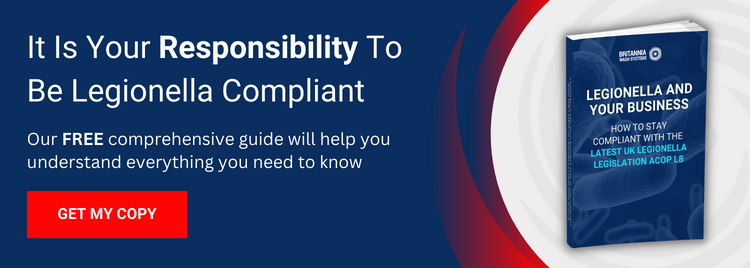
Effective Solutions For Legionella Prevention And Legal Compliance
The HSE stipulate numerous water management assurance and safety best practices for controlling the proliferation of Legionella in commercial and public organisations in the UK, including ACOP L8 (2013), as well as further best practices for Legionella control in the healthcare sector.
In this article, we’ll look at the most effective solutions for Legionella management and legal compliance for UK facilities managers, with an emphasis on risk identification and assessment.
Temperature Control And Legionella Prevention
The Legionella bacterium only thrives within a certain temperature range, and so temperature management in pipes, tanks, wash bays, and water systems is a crucial facet of compliance and control. Legionella bacteria exhibit optimal growth in the temperature range of 20°C to 45°C, so maintaining standing water temperatures outside this range – e.g. below 20°C or above 45°C - can significantly restrict the proliferation of these organisms, thereby fulfilling your legal requirements.
Effective Water Management Strategies
Temperature control is just one component of a multifaceted Legionella prevention approach. Another foundation of Legionella prevention and compliance is an effective water management programme. These programmes – which should be tailored to the needs of each premises – should incorporate detailed protocols for regular microbiological monitoring, disinfection, and regular maintenance to prevent the growth and transmission of Legionella (e.g. through aerosolised water particles).
Systematic ongoing monitoring helps facilities managers identify any alterations in the water system that might change or elevate the risk of Legionella, and when accompanied by a proactive and thorough cleaning and disinfection routine, organisations can effectively eliminate the conditions conducive to Legionella outbreaks.
Legionella Risk Assessments – A Key Compliance Tool
Regular Legionella risk assessments are a vital element in managing your Legionella-related risks and ensuring continued compliance with HSE guidelines. After a benchmark level of risk is established through an initial risk assessment, follow-up assessments should be conducted at scheduled intervals to identify emerging potential hazards, assess the effectiveness of current control measures, and crosscheck results against legal standards to verify compliance.
The shape of a risk assessment will depend on your industry and the nature of your premises but should entail a comprehensive analysis of your entire water management system, including pipework, storage tanks, appliances, and distribution systems. We recommend contracting an experienced individual or consultant with proven expertise and competence in Legionella management, who will be able to offer clear recommendations for process improvements and safeguards to increase your level of site safety.
What Next?
More information about Legionella compliance solutions and how to reduce the risk of contamination on your premises can be found in our new Legionella Compliance Guide. Please click here to claim a free copy today or contact us to find out more.
Image Source: Canva
.webp?width=249&height=77&name=Britannia-logo%20(1).webp)

